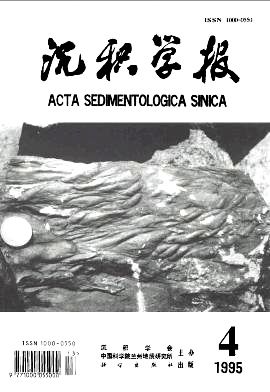Experimental Research of Thermometamorphic Process of Modern Pineal Pollens
- Received Date: 1995-02-02
- Publish Date: 1995-12-10
Abstract: By means of thermal modeling of compound samples which are composed of kaolinnes and modern pineal pollens, the thermometamorphic process of modern pineal pollens were succesively revealed, the products of solids, liquids and gases produced during the thermal degradation were quantitatively gathered, the geochemical characteristics of the products were primarily researched, and the shapes and colours of the pineal pollens during the thermometamorphic process were carefully observed.The gas products of the thermolysis of the pineal pollens included hydrocarbons and nonhydrocarbons. The products of hydrocarbon gases occoured at 200℃, clearly going up above 400℃, up to its maxium (247m3/t) at 600℃. The relative content of the hydrofarbon gases increased with the increase of tempratures, reaching its maxium (55. 77 %) at 500℃. The hydrocarbon gases were mainly composed of methane, ethane and propane with minor amount of butane。 The non-hydrocarbon gases predorminantly consisted of CO and H with certain amount of CO and N2 . The liquid products of the thermolysis are water, light hydrocarbon and extracts. The light hydrocarbons appeared at 250℃, their production went up with the increas of the tempretures, up to their maxium at 450℃ (66. 83kg/t), and then dropping rapidly. The components of light hydrocarbons were mainly satured hydrocarbons, monocyclic aromatic hydrocarbons and dicyclic aromatic hydrocarbons. The extracts were mainly produced at the tempretures below 400℃, the production of them reached its maxium (98. 4kg/t) at 300℃. The extracts contended higher quantities of non-hydrocarbons and alsphaltenes. The content of the satured hydrocarbons and aromatic hydrocarbons rose with the tempretures increasing, up to their highests of 37 % and 29 % respectively.During the thermometamorphic process of the pineal pollens the shapes of them mainly shrank and became small in the period of low tempretures, appearing fissures at 250℃, their sacs separating from their bodies at 300℃, and crushing completely at 350℃。 Their colours darkened with the tempretures rising, being yellow below the tempretures of 150℃, brown at the tempretures of 200℃ ~ 300℃, brown black at 350℃ ~450℃ and black above 500℃. The colour index and vitrinite reflectance of the pineal pollens also increased with the increasing of the tempretures.
| Citation: | Ji Liming, Zhang Xiaobao, Wang Shaofei. Experimental Research of Thermometamorphic Process of Modern Pineal Pollens[J]. Acta Sedimentologica Sinica, 1995, 13(4): 116-124. |






 DownLoad:
DownLoad: